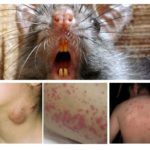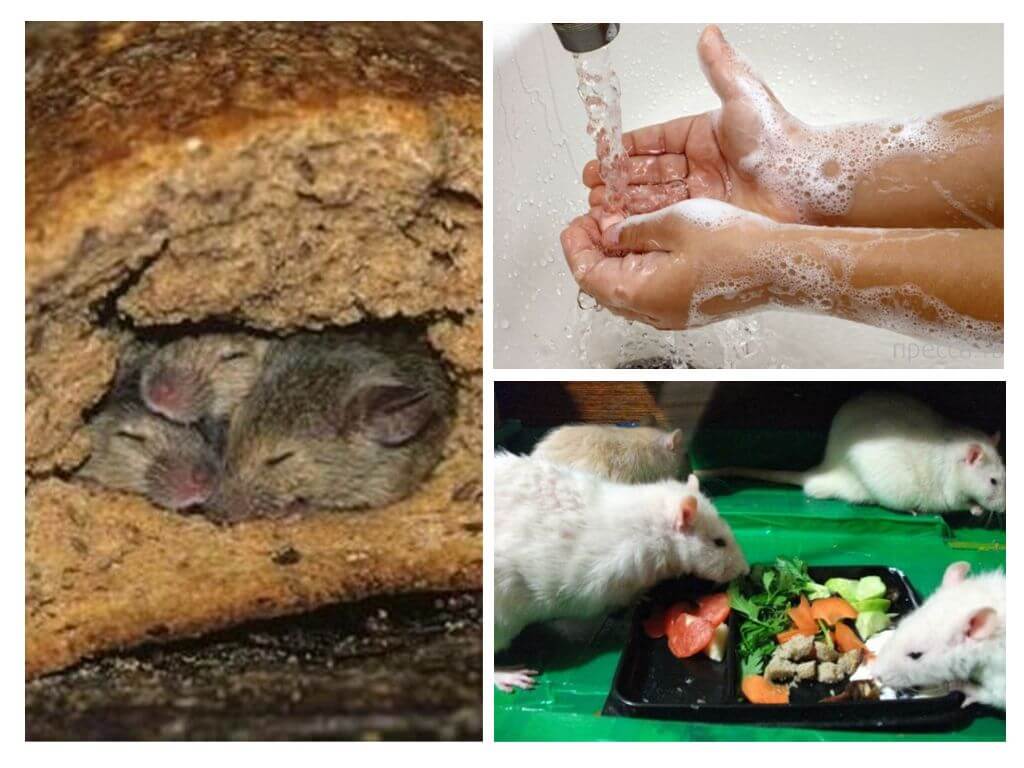What diseases do rats suffer?
Content
- How rats infect humans
- Rat diseases
- Precautionary measures
Rats love to settle in houses and apartments. Human housing is warm and cozy, there you can always find food regardless of the season. Such a neighborhood is extremely dangerous for people. Pests spoil food and furniture, cut wires, interfere with sleep at night and carry diseases that can be fatal.
How does the infection occur?
A person can enter the body with an infectious disease, having tasted the product by which the rat trampled. The wool and paws of these animals are not sterile and are “home” for many pathogens.
Other sources of infection include:
- Bite. The rodent is able to attack humans. Animals even flock to attack a large enemy. If a rats attacked man, rat bite diseases often occur in a complex form and are fatal if left untreated.
- Feces of mice and rats. Pests are not looking for a special place to make "their affairs." They defecate immediately on food. Animal feces contain bacteria that cause dangerous diseases.
- Fleas. Small insects that live in rats, bite and man. The bite becomes a funnel for the entry of pathogenic bacteria and viruses.
- Air. Infection can occur through the respiratory system. Therefore, it is not necessary to bring the rodents to the face.
You can get a dose of pathogenic bacteria from any rat species. Ornamental rats are also unsafe. The chance of infection from them is minimal, but it is.Therefore, you should follow a few simple rules of communication with the animal: wash your hands after playing with your pet, do not hold it to your face, keep the cage away from food.
What diseases does a rat suffer?
The list of diseases that can be picked up from a rodent living in the homes of even large cities (such as Moscow or St. Petersburg), inspires. If after meeting with pasyuk or black rat, feeling unwell, you should immediately contact an infectious diseases specialist.
On a note!
The first symptoms of the disease appear within two days. A person fever, chills and pain in the joints. Many deadly diseases are similar in symptoms to the flu. But if there was contact with a rodent, you must inform the doctor.
The doctor will examine and prescribe an antibiotic. Without treatment, the disease will progress further and be fatal.
Leptospirosis
People call it a rat disease. The causative agents are leptospira, the owner of which is a wild rodent. The infection gets through the wound. Wild rat it is enough to bite a person once, so that he becomes infected.Leptospira enter the body through the slightest damage to the skin.
The bacterium secretes toxins that affect blood clotting. The patient has to endure a strong thirst. He cannot eat or sleep. The temperature of his body rises, causing severe chills.
On a note!
The peak incidence comes in the autumn period.
The first symptoms of leptospirosis resemble the usual acute respiratory disease:
- temperature 39-40 degrees;
- pain in the body;
- nausea.
The main symptom of the disease is pain in the calf muscles. After a week, the face begins to swell, eyes turn red. Leptospirosis is difficult and long-term treatment. Mortality from this disease is ten percent. Therefore it is necessary to visit a doctor at the first sign. Antimicrobial agents are prescribed for treatment.
Rabies
People who run into a rat in their home start to worry if rats are sick with rabies. Attack overtakes any mammal: a dog, a cat, a fox. Rodents are also subject to illness and can infect humans through a bite.
On a note!
If you or your child is bitten by a rabid rat, you should immediately consult a doctor. Medic will prescribe vaccinations that will save your life.
A sick animal behaves aggressively, makes chaotic movements, will attack abruptly and unexpectedly. Viscous saliva flows from the mouth. A mad mouse or rat can attack inanimate objects. His head and tail are down. The jaw does not close. Rabies in rats causes the animal to die ten days after the infection reaches the brain tissue.
Tularemia
The disease is contagious. It affects the lymph nodes and skin. A patient with tularemia feels:
- chills;
- pain in the limbs;
- headache;
- fever;
- dizziness.
Rats vectors infected with tularemia, behave apathetically and do not leave the nest. The animal dies in 3-4 days. Infection occurs through a bite or blood-sucking insects.
Mouse typhus
Rodents are not susceptible to this disease. They are only carriers. But the person is experiencing the disease in itself in full. He feels chills, body temperature rises to 40 degrees. Nausea and vomiting appear. Vision falls.
On a note!
Mouse typhus is transmitted by airborne droplets. To reduce the risk of infection, do not hold close to the face of rats.
Easy to transfer the disease will not work. An antibiotic is prescribed for treatment.
What diseases tolerate ornamental rats
Fans of domestic rats often hear that their pets are carriers of serious diseases. Therefore, they want to know what diseases are borne by rats living in cages at home.
Pets that are not in the open air, in rare cases, become carriers of pathogenic bacteria. Rat can infect its own owner. A mammal that has eaten unwashed weed or vegetables can pick up salmonella, and then, playing at the dinner table, pass on the infection to a person.
You must follow simple rules to avoid disease:
- Wash hands after contact with a pet.
- Do not put a cage with a rat near food and do not allow the animal to run around the common table, eat from your plate. These measures will help to avoid rat droppings in food.
- Feed your pet only fresh food. Wash vegetables, fruits, greens.
If you are going to become the owner of a rat, then buy an animal from a trusted seller. Do not take the animals in the "bird markets". It is better to make a purchase at a pet store. Diseases from decorative rodents are transmitted only when the owner does not monitor his animals and does not follow the rules of hygiene.
The Pasyuki are not harmless animals.Protecting their territory, they even attack people and inflict painful wounds. Through bites, diseases are transmitted from rats to humans. Many of them are difficult and can cause death. If a rat bit man, it is necessary to treat the wound and seek medical help.











